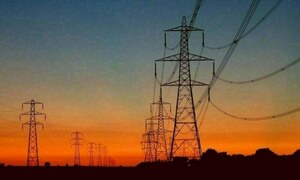US natural gas futures on Thursday climbed higher on forecasts for more heating demand next week than previously expected. Traders said prices rose despite a weekly storage report showing inventories increased a bit more than expected, which would normally cause prices to decline. "This market didn't appear significantly affected by a storage injection that was close to average industry expectations," Jim Ritterbusch, president of Chicago-based energy advisory firm Ritterbusch & Associates, said in a report, noting the "latest adjustments calling for some cooler trends ... are spurring some buying interest."
The US Energy Information Administration said utilities added a slightly bigger-than-expected 65 billion cubic feet (bcf) of gas into storage in the week to October 27. That increased the amount of fuel in stock to around 3.8 trillion cubic feet (tcf), about 1.1 percent below the five-year average for this time of year. In the same week last year, utilities added 56 bcf. The five-year average increase for the week ended October 27 was 60 bcf. Front-month gas futures rose 4.2 cents, or 1.5 percent, to settle at $2.935 per million British thermal units.
The latest forecasts call for seasonal temperatures over the next two weeks that will slowly boost heating demand as the weather turns colder. Thomson Reuters forecast US gas consumption would rise to an average of 84.8 billion cubic feet per day (bcfd) next week from 79.1 bcfd this week. That compares with Wednesday's forecasts of 83.8 bcfd for next week and 79.2 bcfd this week. Traders noted most changes from Wednesday's forecast for next week resulted from higher than previously expected heating demand.
Production in the lower 48 US states last week set a record high of 75.8 bcfd, topping the prior high of 75.0 bcfd in September 2015, according to Reuters data. Output so far this week has averaged 75.1 bcfd. US gas exports overall were expected to average 8.9 bcfd this week, up 51 percent from a year earlier, primarily due to much higher shipments of liquefied natural gas, according to Reuters data. Some traders noted that unless supply and demand forecasts change, utilities could start pulling gas out of inventory as soon as next week to meet seasonal increases in heating demand.
Other traders, however, said they expect utilities to continue injecting gas into storage for a few more weeks, boosting total stocks to about 3.9 tcf, which is near the five-year average for the annual peak. Traders said that should be more than enough gas to meet demand this winter if the latest forecasts for another warm winter are correct. The US National Weather Service expects temperatures in December, January and February to be warmer than normal across much of the country again this year. The last two winters (2015-16 and 2016-17) were among the warmest on record.
BR100
11,697
Decreased By
-168.8 (-1.42%)
BR30
35,252
Decreased By
-445.3 (-1.25%)
KSE100
112,638
Decreased By
-1510.2 (-1.32%)
KSE30
35,458
Decreased By
-494 (-1.37%)

























Comments
Comments are closed.